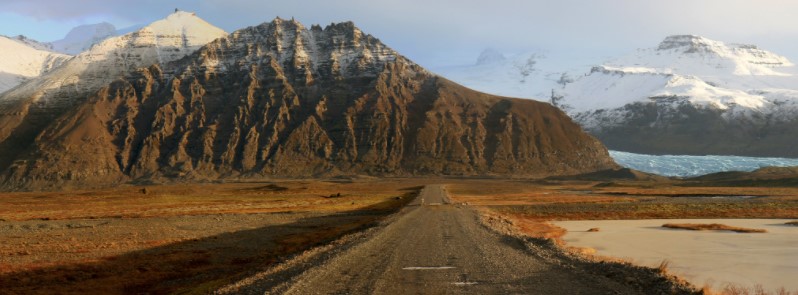Alert raised for Iceland’s Öræfajökull volcano, last eruption was in 1728

A new ice-cauldron has formed this week within the Öræfajökull volcano caldera, prompting the Icelandic Meteorological Office (IMO) to raise the aviation color code for the volcano to yellow. The last eruptive episode of this volcano started in August 1727 and ended in May 1728.
A pilot flying over the area took pictures of the cauldron Friday, November 17, 2017 and sent them to the Icelandic Meteorological Office. The cauldron is about 1 km (0.62 miles) in diameter and it reflects a recent increase in geothermal activity within the caldera.
"It seems that geothermal water has been slowly released from underneath the cauldron to the glacial river of the Kvíárjökull outlet-glacier (SE flank of Öræfajökull volcano)," IMO said. "A sulfur smell, associated with this water release, has been reported nearby Kvíárjökull since last week. Most of the water has probably already been released."
The office has also registered an increase in the seismic activity in the last few months, but it has been low for the past days.
"This data indicates increased activity of the volcano which has not erupted since 1727," the office said, adding that there are currently no signs of an imminent eruption.
The Icelandic Coast Guard will fly over the area with scientists on Saturday, November 18 to collect additional data and samples. IMO has increased the surveillance of the area and is monitoring the volcano closely in collaboration with scientists from the University of Iceland and the Icelandic Civil Protection Authorities.
In light of this elevated activity, the office has raised the aviation color code for Öræfajökull to yellow (November 17).
The last eruptive episode of this volcano started on August 3, 1727, and ended on May 1, 1728 (± 30 days). It had Volcanic Explosivity Index of 4 (on a scale of 1 – 7) and was responsible for deaths of three people.
Before that, the volcano started erupting on June 5, 1362 (± 4 days) and stopped on October 15, 1362 (± 45 days). This one had Volcanic Explosivity Index of 5 and was Iceland's largest historical explosive eruption. The volcano ejected huge amounts of tephra and destroyed the district of Litla-Hérað by floods and tephra fall. More than 40 years passed before people again settled the area, which became known as Öræfi.
Geological summary
Öraefajökull, Iceland's highest peak, is a broad glacier-clad central volcano at the SE end of the Vatnajökull icecap. A 4 x 5 km (2.5 x 3 miles) subglacial caldera truncates the summit of the dominantly basaltic and rhyolitic volcano. The extensive summit icecap is drained through deep glacial valleys dissecting the SW-to-SE flanks. The largest-volume volcano in Iceland, 2119-m-high (6 962 feet) Öraefajökull was mostly constructed during Pleistocene glacial and interglacial periods.
Holocene activity has been dominated by explosive summit eruptions, although flank lava effusions have also occurred. A major silicic eruption in 1362 CE was Iceland's largest historical explosive eruption. It and another eruption during 1727-28 were accompanied by major jökulhlaups (glacier outburst floods) that caused property damage and fatalities. (GVP).
Featured image: Road to Öraefajökull, Iceland. Credit: Debivort

Commenting rules and guidelines
We value the thoughts and opinions of our readers and welcome healthy discussions on our website. In order to maintain a respectful and positive community, we ask that all commenters follow these rules.